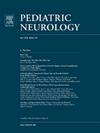急性新生儿癫痫药物试验招募的障碍:来自静脉注射苯巴比妥的随机、双盲、对照研究的经验教训
IF 3.2
3区 医学
Q2 CLINICAL NEUROLOGY
引用次数: 0
摘要
背景:尽管癫痫在新生儿中普遍存在,但由于伦理考虑、试验设计困难以及医院资源和人员有限,新生儿癫痫药物试验很少进行。该前瞻性连续病例系列的目的是强调在2022年1月24日至2023年2月1日期间进行的急性新生儿癫痫治疗试验中,单个研究地点招募参与者时遇到的经验和挑战。结果包括每个筛选患者的试验招募过程的信息,即患者的入院时间、资格状态、未接触潜在符合条件的患者的原因、拒绝同意的原因和癫痫发作结果。结果研究小组筛选了转入国立儿童医院新生儿重症监护病房的191例患者中的164例(86%)进行连续脑电图检查。在筛选的164例患者中,71例(43%)不符合研究条件,另外69例(42%)患者未尝试同意。共联系了24名患者征求同意,12名(50%)患者拒绝。只有2名(17%)患者接受了研究药物治疗,其余10名(83%)入组患者未能通过筛查。16名未经筛选或不同意的患者在研究期间继续发作,如果入选,他们将有资格接受研究药物。结论通过解决同意程序、人员和资源配置以及家长对临床试验的怀疑等问题,可以提高急性新生儿癫痫治疗试验的招募水平。本文章由计算机程序翻译,如有差异,请以英文原文为准。
Barriers to Recruitment in an Acute Neonatal Seizure Drug Trial: Lessons From a Randomized, Double-Blind, Controlled Study of Intravenous Phenobarbital
Background
Despite the prevalence of seizures among neonates, neonatal seizure drug trials are rarely conducted due to ethical considerations, difficulties in trial design, and limited hospital resources and personnel. The purpose of this prospective consecutive case series is to highlight the experiences and challenges encountered by a single study site in participant recruitment for an acute neonatal seizure treatment trial that was active between January 24, 2022, and February 1, 2023.
Methods
Outcomes include information about each screened patient's trial recruitment process, namely, the patient's time of admission, eligibility status, reasons why potentially eligible patients were not approached, reasons consent was declined, and seizure outcomes.
Results
The study team screened 164 of 191 (86%) patients transferred to the Children's National Hospital neonatal intensive care unit for continuous electroencephalography. Of the 164 patients screened, 71 (43%) were ineligible for the study, and consent was not attempted on an additional 69 (42%) patients. A total of 24 patients were approached for consent, and 12 (50%) declined. Only two (17%) patients were treated with the study drug, as the remaining 10 (83%) enrolled patients failed the screening. Sixteen of the unscreened or nonconsenting patients went on to have seizures within the study period and would have been eligible to receive the study drug if enrolled.
Conclusions
Poor recruitment in acute neonatal seizure treatment trials may be improved by addressing issues in the consent process, personnel and resource allocation, and parent suspicion about clinical trials.
求助全文
通过发布文献求助,成功后即可免费获取论文全文。
去求助
来源期刊

Pediatric neurology
医学-临床神经学
CiteScore
4.80
自引率
2.60%
发文量
176
审稿时长
78 days
期刊介绍:
Pediatric Neurology publishes timely peer-reviewed clinical and research articles covering all aspects of the developing nervous system.
Pediatric Neurology features up-to-the-minute publication of the latest advances in the diagnosis, management, and treatment of pediatric neurologic disorders. The journal''s editor, E. Steve Roach, in conjunction with the team of Associate Editors, heads an internationally recognized editorial board, ensuring the most authoritative and extensive coverage of the field. Among the topics covered are: epilepsy, mitochondrial diseases, congenital malformations, chromosomopathies, peripheral neuropathies, perinatal and childhood stroke, cerebral palsy, as well as other diseases affecting the developing nervous system.
 求助内容:
求助内容: 应助结果提醒方式:
应助结果提醒方式:


